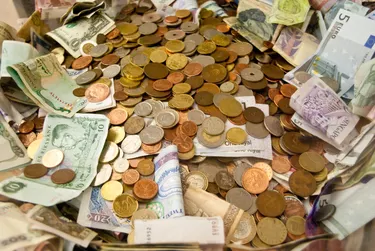
Real-world money multipliers refer to the process in which banks loan money and the result is more cash circulating in the economy. That is, the money supply is multiplied. Economists measure a basic money multiplier by calculating the inverse of the required reserve ratio set by the Federal Reserve, the institution responsible for regulating banking activities. However, this simple formula assumes that all banks in the economy that lend money do not keep excess cash over the reserve requirement. In the real world, each bank has a different multiplier depending on its excess reserves.
The Reserve Requirement
Video of the Day
The reserve requirement is the ratio set by the Federal Reserve. This ratio is the required percentage of their deposits that banks must keep in cash. Typically this ratio is between 10 and 15 percent. Banks can use their remaining deposits for loans. Doing so multiplies the amount of money in circulation. Economists keep a close eye on the money multiplier to prevent inflation. However, the money multiplier can be overstated because it does not account for excess reserves.
Video of the Day
Real-world Money Multipliers
Real-world multipliers can be expressed per bank, per community or in the overall economy. To determine a real-world multiplier, we need to know what the actual monetary base is. A simple money multiplier assumes that the monetary base is the required reserve rate multiplied by the amount of deposits in the banking system. However, the actual monetary base must add in the excess reserves from each bank plus currency in circulation. By taking the inverse of this total, we arrive at a real-world money multiplier.